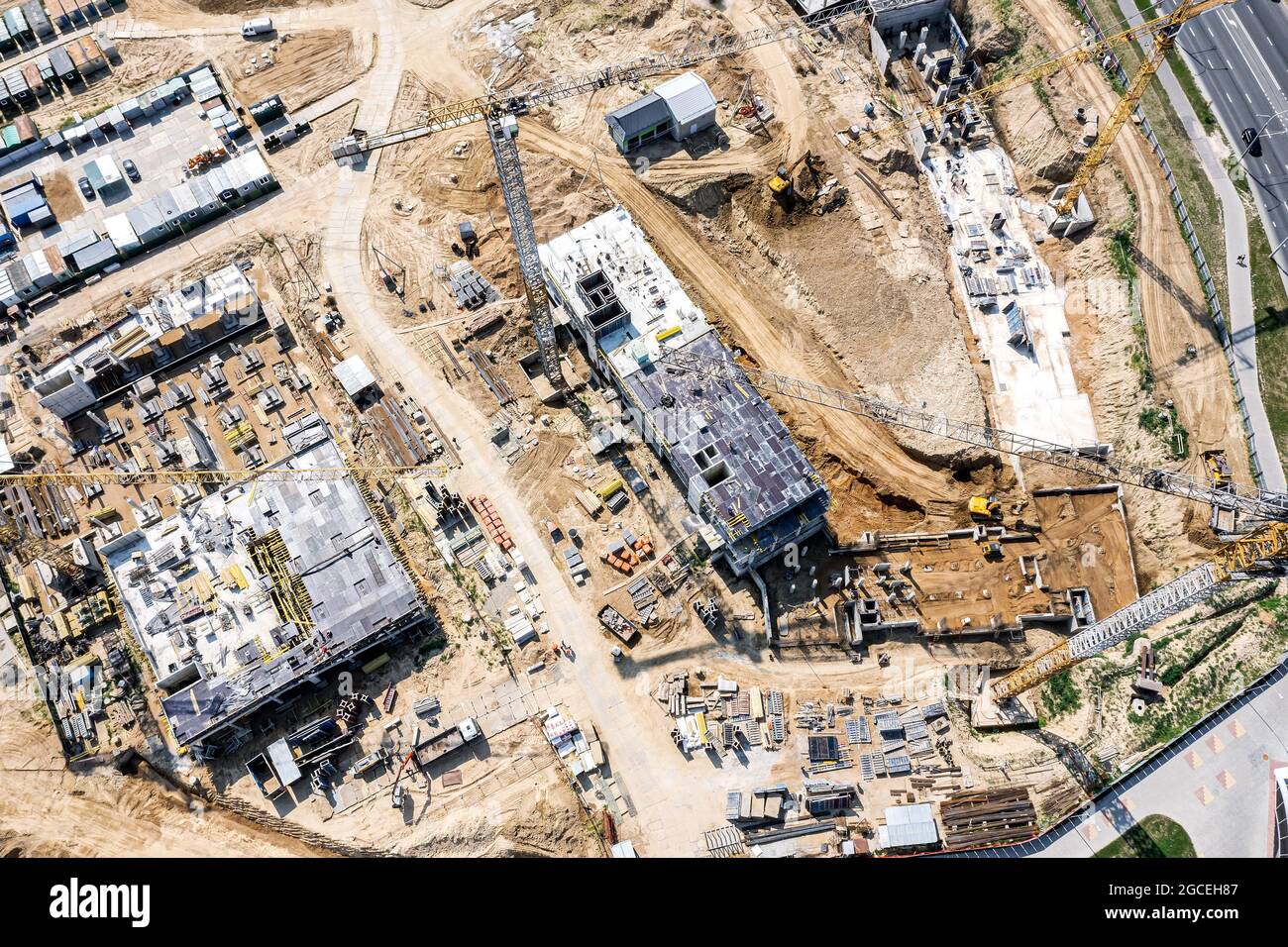Discover how non-standard construction techniques are revolutionising UK property development, offering innovative solutions for modern building challenges.
Understanding Non-Standard Construction in Modern UK Building
Non-standard construction represents a significant departure from traditional brick-and-mortar building methods that have dominated the UK construction landscape for centuries. In 2024, these alternative approaches are gaining unprecedented traction, with over 25% of new builds incorporating non-standard elements. This shift reflects growing demands for sustainable, efficient, and innovative building solutions. Non-standard construction encompasses any building method that deviates from conventional brick or stone walls with pitched, tiled roofs – the standard that has defined British architecture for generations. From timber-framed structures to cutting-edge prefabricated units, these methods are reshaping our understanding of what modern construction can achieve.
The Evolution of Alternative Building Methods
The journey of non-standard construction in the UK traces back to the post-war era of the 1940s and 50s, when housing shortages necessitated rapid, cost-effective building solutions. The prefabricated houses of this period, affectionately known as ‘prefabs’, marked the beginning of widespread alternative construction methods. Today’s landscape has evolved dramatically, with technological advancements driving a 40% increase in non-standard construction adoption since 2020. Modern innovations have transformed these once-temporary solutions into sophisticated, durable alternatives that often outperform traditional building methods in terms of efficiency and sustainability.
Common Types of Non-Standard Construction
- Timber Frame Construction: Increasingly popular, accounting for 28% of new builds in 2024, offering excellent thermal properties and rapid construction times
- Steel Frame Buildings: Predominantly used in commercial construction but gaining traction in residential projects, particularly for larger structures
- Concrete Systems: Including insulated concrete formwork (ICF) and precast panels, offering superior strength and thermal efficiency
- Modern Methods of Construction (MMC): Encompassing modular and volumetric construction, with factory-built units reducing on-site construction time by up to 50%
- Eco-friendly Alternatives: Including cob, straw bale, and hemp construction, seeing a 15% year-on-year increase in adoption for sustainable builds
Technical Considerations and Building Regulations
Non-standard construction must adhere to strict building regulations while often requiring specialised expertise. Current UK building regulations have evolved to accommodate these methods, with specific guidance for each type. Key considerations include structural integrity, fire safety, and thermal performance. Recent updates to Part L of the Building Regulations in 2022 have particularly impacted the specifications for non-standard builds, requiring enhanced energy efficiency standards. Compliance with these regulations often necessitates detailed structural calculations and performance assessments, particularly for innovative or unusual construction methods.
Benefits of Non-Standard Construction
- Cost-effectiveness: Average savings of 20-30% compared to traditional methods, particularly in labour costs
- Environmental Sustainability: Reduced carbon footprint, with some methods achieving up to 75% lower CO2 emissions during construction
- Speed of Construction: Typical time savings of 30-50% compared to conventional builds
- Design Flexibility: Greater scope for architectural innovation and customisation
- Energy Efficiency: Superior insulation properties, leading to reduced heating costs by up to 40%
Potential Challenges and Solutions
While non-standard construction offers numerous advantages, it also presents unique challenges. Securing mortgages can be more complex, with only 60% of UK lenders currently offering products for non-standard constructions. Insurance premiums may be higher, reflecting perceived increased risks. However, these challenges are increasingly being addressed through specialist financial products and improved industry understanding. Maintenance requirements vary significantly between different methods, but modern materials and techniques have substantially improved longevity and durability.
Making the Right Choice: Assessment Criteria
- Site Suitability: Evaluate ground conditions, access, and local climate impacts
- Budget Analysis: Consider initial costs versus long-term savings, including energy efficiency benefits
- Planning Requirements: Check local authority attitudes towards non-standard construction
- Future Proofing: Assess adaptability and potential for modifications
- Environmental Impact: Consider whole-life carbon footprint and sustainability credentials
Future of Non-Standard Construction in the UK
The future of non-standard construction in the UK looks increasingly promising, with industry experts predicting a 45% growth in alternative building methods by 2030. Technological advancements, particularly in materials science and digital construction, are driving innovation. The push towards net-zero carbon emissions is accelerating adoption, with non-standard methods often offering superior environmental performance. Emerging trends include the integration of smart technology, increased use of sustainable materials, and greater standardisation of modular components.
Expert Recommendations and Best Practices
Success in non-standard construction projects requires careful planning and execution. Industry experts recommend starting with thorough research and engaging specialists early in the process. It’s crucial to work with contractors who have specific experience in your chosen construction method. Current data shows that projects using experienced contractors are 80% more likely to complete on time and within budget. Documentation and quality control are particularly important, as is maintaining clear communication channels between all stakeholders. Regular inspections during construction and comprehensive warranties can help ensure long-term success and value retention.
FAQ
What are the 4 main types of construction?
The four main types include residential, commercial, industrial and infrastructure construction, but there are other types of construction as well as different ways to classify them, such as by sector, owner, occupancy or fire resistance. Each type of construction has its own unique set of challenges and requirements.
What does ISO mean in construction?
the International Organization. for Standardization. ISO provides a platform for developing practical tools through common understanding and cooperation with all stakeholders. 21 700* International Standards.
What are the examples of construction standards?
Some examples of construction standards include: Building Codes: Building codes set minimum requirements for building materials, equipment, and construction practices. These codes are typically enforced by local government agencies and are designed to ensure the safety and quality of construction projects.
What is a standard construction?
We typically lend on properties of standard construction which is defined as built of stone, concrete block and/or brick with either solid or cavity walls that consist of an inner and outer skin. The outer skin will usually be of stone, brick or block. The roof will be of slate, tile, thatch or felt.
Sources
[1] https://fourthwallbc.com/blog/buying-non-standard-construction-house/
[2] https://hertstools.co.uk/what-is-a-non-standard-construction/
[3] https://www.homesellingexpert.co.uk/guides/non-standard-construction-complete-guide


Leave a Reply